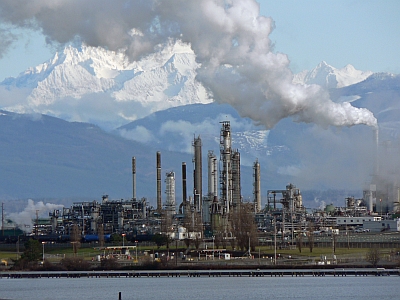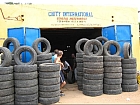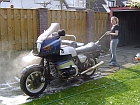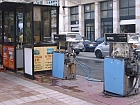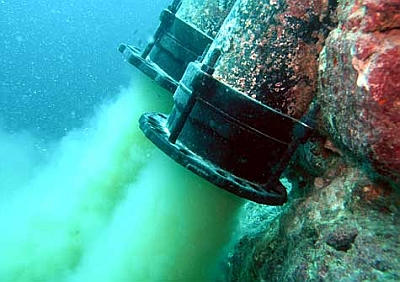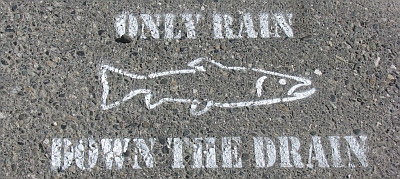Les sources terrestres de la pollution pétrolière marine (en anglais)
Land-based Sources of Oil Pollution
Big oil spills following events such as tanker accidents, technical failure of industrial facilities or armed conflict such as the Gulf war always hit the news: their dramatic consequences for the environment are clearly visible. Great numbers of seabirds, fish, shellfish or marine mammals killed within a few days, and large-scale destruction of beaches and other coastal areas can brutally be seen.
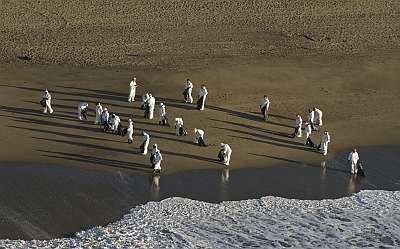
Photo: Jonathan R. Cilley, U.S. Coast Guard / Marine Photobank
It is however a fact that the big oil spills account for a considerably smaller total annual input than the constant, diffuse input from land-based sources. These inputs are still poorly understood, and therefore estimates of figures describing the total amount of land-based oil input to the sea have a high degree of uncertainty.
Land-based sources of oil are coastal basins and inland basins.
Oil enters the marine environment with untreated or insufficiently treated waste water or stormwater from various coastal facilities such as coastal industries, ports, refineries, oil storage facilities, and coastal oil disposal facilities in ports. Waste water from these sources has a high oil content that originates from valves, pumps, loading ramps for vehicles, quays, etc.
Oil discharged with urban runoff further inland comes from small spills of oil from engines of different vehicles, exhausts from different vehicles, particles from worn tyres, machinery, spills at petrol stations and garages, flushed-out residues of lubricants, etc. Everything that is flushed onto or falls down upon sealed surfaces will become constituents of the contaminated stormwater. This includes also car washings on the road or in your drive way at home which in many countries are illegal.
When streets, roofs, and other sealed areas are washed by rain and snow, the resulting waste water (stormwater) is flushed into the general sewer system or into storm drains along roadsides. If the sewage treatment is adequate, the stormwater and municipal sewage will both be treated. If no treatment plant exists, or treatment facilities are inadequate, the sewage, including the stormwater, will be discharged into the sea more or less uncleaned.
In addition, illegal disposal of used oil into storm drains and into rivers makes up a proportion of marine pollution as well.
